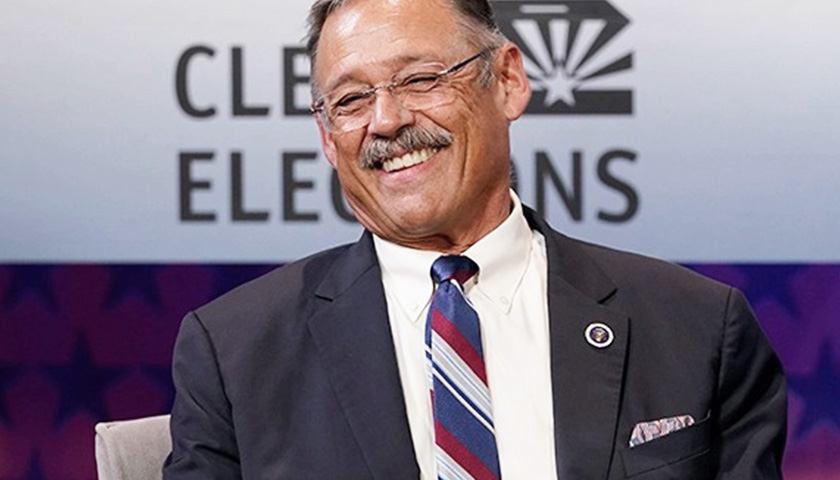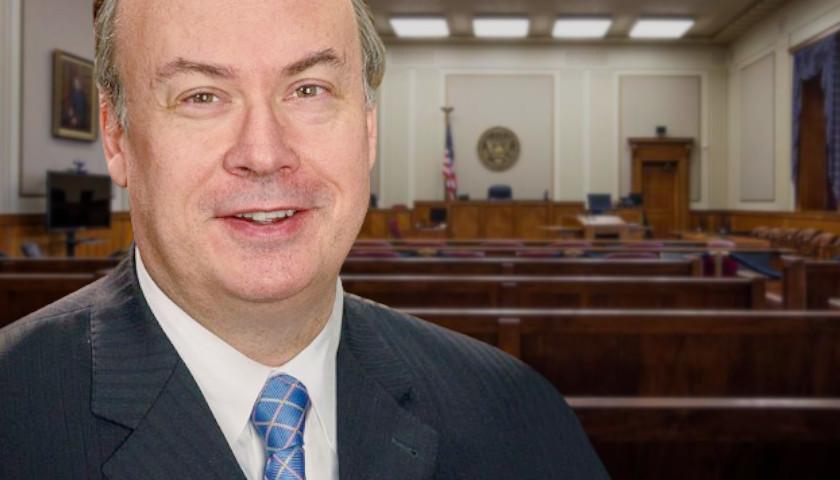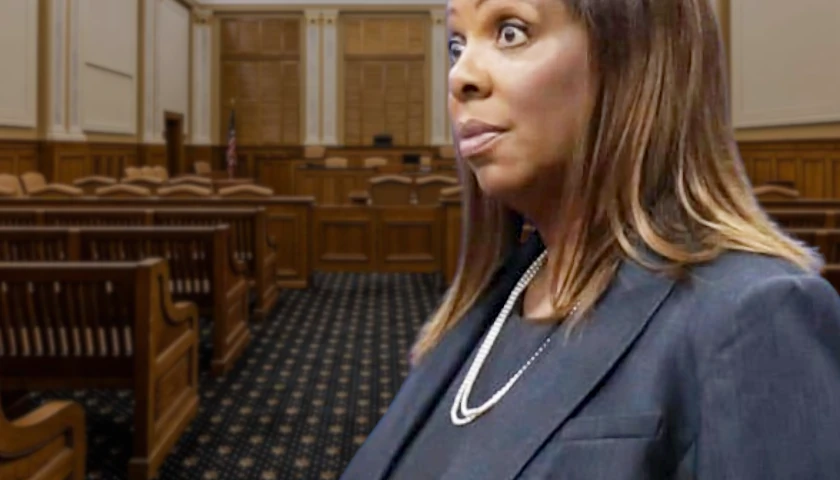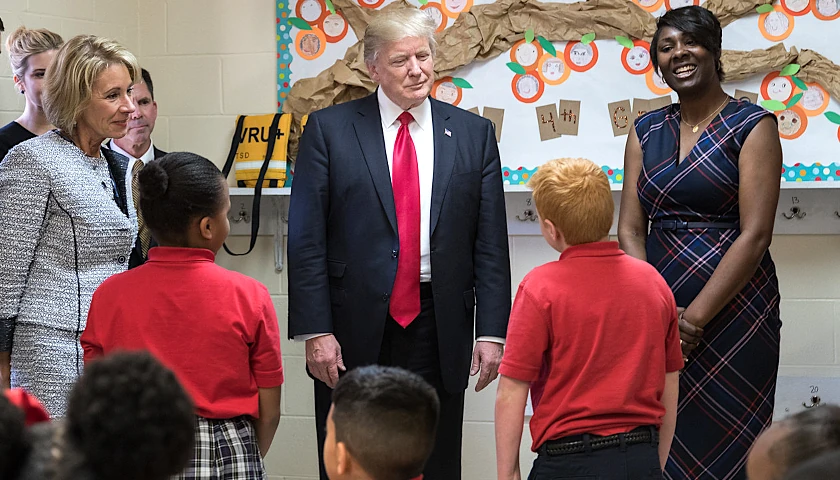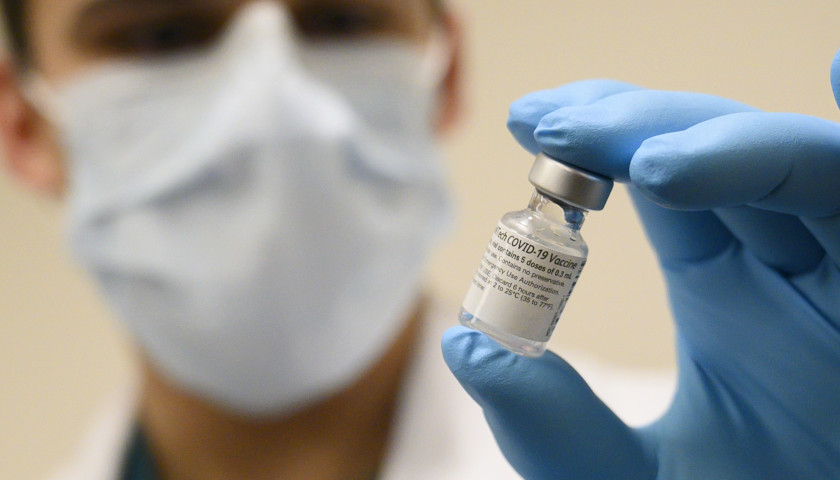Former Republican candidate for Arizona Secretary of State Mark Finchem, who is contesting his loss last fall to Democrat Adrian Fontes, filed a Notice of Supplemental Authority and Evidence in Support of Contestant’s Motion for Reconsideration last week. A Maricopa County judge dismissed his lawsuit in December. Finchem included 10 exhibits consisting primarily of declarations from observers, election workers, and experts, including one who believes the election printer settings in Maricopa County were deliberately modified to create misreads of the ballots.
Exhibit K was a declaration from Bob Hughes, who has 50 years in the printing industry and 16 years printing ballots for the Maricopa County Elections Department. Last month, Hughes and a team examined the Logic & Accuracy tests that were performed immediately before the election, the ballots used for testing, the certification reports for each voting center, and the tabulator reports printed from the testing. He concluded, “An intentional change was made to the printers affecting the DAY OF Election ballots.”
He said the change was made after completing the Logic & Accuracy tests. “The most important and notable finding is that every machine and every voting center report showed that every test was passed without any failures,” Hughes stated. He surmised that since “no 19 inch format ballots were created for the 2022 election … it was not possible that a BALLOT STYLE other than a 20″ PDF could have been used, even by accident for the 2022 Election.” Since many 19-inch ballots were printed during the election, he said it “clearly indicates that the interference caused by 19″ ballots had to have been by someone from [Maricopa County Tabulation and Election Center (MCTEC)] or by someone hacking into the MCTEC system.”
He added, “Since no failures occurred during even one test of the system and since all the machines were made tamperproof and held in security until used, no other possible reason is plausible. The assertion that random accidents occurred on Election Day is impossible. A large number of printers, all printing ballots of the wrong 19 inch size on Election Day, is not a random accident.”
Hughes said it was “an orchestrated attack on the election,” and “the errors had to be introduced after the testing.” He also questioned the numbers Maricopa County posted on its website of ballots that could not be tabulated on Election Day, 16,724.
He said it was far too small.
“Because ballots are strictly controlled and a limited number of ballots were reported taken to be counted following the election, it is not plausible that the number of ballots left to be counted was off by such a large number, as actually occurred in 2022,” Hughes said.
Finchem’s additional pleading stated that “new authority and evidence” emerged due to the Arizona Supreme Court’s ruling in Kari Lake’s election appeal. That court said the trial court erred in dismissing her allegation of improperly verified voter signatures. Finchem’s lawsuit also alleged signatures were improperly verified.
Finchem clarified that he is not challenging merely 60,000 votes, which would not be enough to overturn the election, but hundreds of thousands of votes.
“These ballots which may affect the Lake case are the exact same ballots in this case,” he said.
Exhibit A featured a declaration from Denise Marie, an employee of Runbeck Election Systems who works as a sorter operator. She discussed several problems with the chain of custody handling ballots, including “at least 9,530 duplicate ballots printed.” She said there was no count of the ballots received from the post office, only estimates. Marie explained how the chain of custody procedures changed on election night from previous practice; the ballots delivered to Runbeck from MCTEC failed to contain a chain of custody form, and so Runbeck merely came up with estimates.
Another new declaration submitted was from Kelly Kuchta, an election observer at MCTEC. In Exhibit B, Kuchta stated that misread ballots were intermingled with ballots that had already been cast. He said misread ballots were also transported to MCTEC from the voting centers in black satchels, which were supposed to be used for the ballots that were already tabulated.
Kuchta had a problem with Jarrett stating there were 18 or 19 black satchel bags containing misread ballots since there were 28 voting centers he counted with misread ballots. He said there were over 400 black satchel bags at MCTEC.
Exhibit C contained an email exchange between the Arizona Secretary of State’s Office (AZSOS) and Twitter from 2021, where the AZSOS requested that Twitter remove some tweets from a user. The tweets alleged that foreign actors owned and operated the voter registration system. Twitter removed the tweets.
Finchem added Exhibit G, a declaration from Jacqueline Onigkeit, who worked during the 2022 election as a level one signature verification worker. She discussed how over multiple weeks, she rejected 35-40 percent of the ballots due to the signatures. She expressed her concern that the procedure used to cure the bad signatures was poor since “there was inadequate personally identifiable information” available to confirm the voters’ identities, and “when the alleged voter was on the phone, they did not have the ability to actually see and verify that the signature on the ballot matched their signature.”
Finally, she found it problematic that the managers could place “approved” stickers on ballots without any oversight.
Exhibit F contained a declaration from another level one signature verification worker, Yvonne Nystrom. She expressed the same concerns as Onigkeit. Exhibit E, another declaration from a level one signature verification worker, Andrew Myers, contained similar observations and questioned how all the rejected signatures disappeared. He said he and the other workers only received “one tenth” of the rejected signatures for curing later, since he said he believed “the level 2 managers were changing about 90% of the rejected signatures to accepted.” In addition, he discovered “a number of voters” who went through the curing process but their ballots were never counted.
Finchem added Exhibit H, a declaration from poll observer Leslie White. She said while watching the misread ballots tabulated at MCTEC that she viewed “the entire process from the time the seals were cut off of the containers and dropped on the floor.” The poll observer also added that at “no time did any person count or record any information about the seals removal or the number or type of ballots inside the blue top containers.”
White disputed the claim of Maricopa County Elections co-director Scott Jarrett that “Republican observers saw all scanning, logging or properly maintaining chain of custody.”
She said it was “false” that “the tamper evident seals were ‘logged and scanned as they are received.’” Instead, the seals “were just left on the floor.”
Another declaration Finchem added as Exhibit I was from Richard Baris, the director of Big Data Poll, who discussed the results of an exit poll he took after the 2022 election. Based on the responses, he said he believes far more Republican votes were suppressed due to the printer problems. He estimated at 44,860 votes that should have gone for Lake, erasing Katie Hobbs’ lead in the gubernatorial race.
Also, Finchem added an affidavit from Shelby Busch, chair of We the People AZ Alliance, as Exhibit J. She relayed how she and her co-founder Steve Robinson were appointed by former Arizona Secretary of State and Senate Liaison, Ken Bennett, as deputy Senate Liaisons to the 2020 Senate Election Audit and how by examining voter registration files, they found thousands of votes cast in the 2020 election that appeared to be invalid. These included ballots cast from voters whose registration had been canceled in the voter rolls as deceased. Some ballot envelopes were cured even though the name signed did not match the voter’s name.
Busch next looked to see how many of those voters cast ballots again in 2022 and discovered many of them had. Based on the percentage of ballots they audited, Busch estimated that hundreds of thousands of invalid ballots were cast in the 2022 election.
– – –
Rachel Alexander is a reporter at The Arizona Sun Times and The Star News Network. Follow Rachel on Twitter. Email tips to [email protected].
Photo “Mark Finchem” by Mark Finchem.

